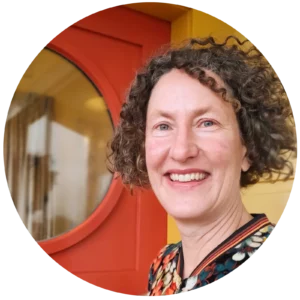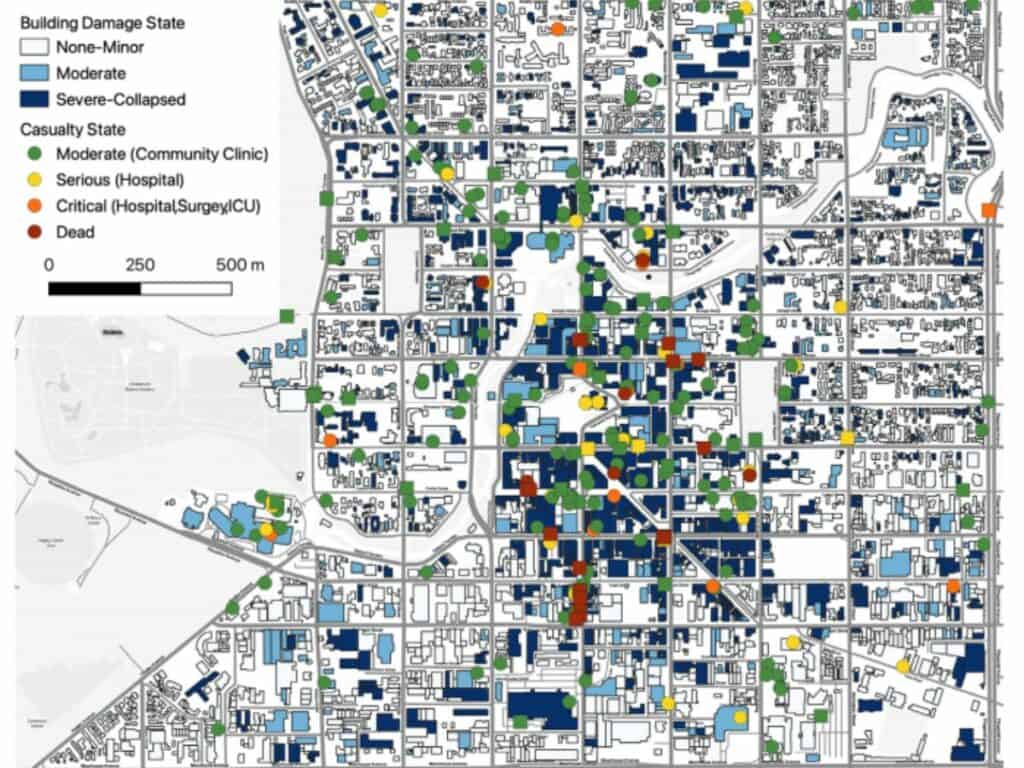Drop. Cover. Hold.
This is the safest course of action when the ground starts shaking – and now, there’s further research to reinforce it.
Nick Horspool, risk specialist at GNS Science, has recently completed a Te Hiranga Rū QuakeCore PhD. His thesis has been recognised as of “exceptional quality in every respect” by being placed on the Dean of Graduate Studies Honours List at the University of Auckland.
Nick analysed records of injuries and deaths from the Canterbury Earthquake Sequence and the Kaikōura earthquake in Aotearoa New Zealand. He wanted to know exactly what causes people to be injured or killed in earthquakes. Usually, it’s not the earthquake itself that causes casualties, but interactions between shaking, buildings, and people. As we remember all too clearly, it was building collapse in Christchurch that led to most deaths. And it turns out that people’s behaviour led to most injuries.
Nick believes, “If we can better understand key risks for deaths and injuries from earthquakes, then we can be more successful at reducing those risks”.
Nick worked with a multidisciplinary team of health professionals, engineers, and social scientists to build a statistical model that forecasts deaths and injuries from future earthquakes. Forecasting casualties enables pre-earthquake planning and risk mitigation to be better targeted, and appropriate emergency and health responses to be mounted immediately post-earthquake.
The model is built from more detailed information than previously available. Data sources include claims to the Accident Compensation Corporation, follow-up surveys of individuals, health board records and coronial inquiries.
The most challenging part of the project was bringing multiple components into a logical framework. Unlike previous earthquake casualty models, this new tool takes a multivariate approach by considering seismological, engineering, behavioural and socio-economic factors.
The earthquake casualty model is now available as part of RiskScape. Nick hopes it will help society get better at protecting people’s lives. It can be used to run a variety of scenarios and will be valuable for other countries with building codes like ours. It will also be useful for cost-benefit analysis of mitigation actions such as education, early warning systems, retrofitting and upgrading building codes.
“Strengthening buildings is crucial for reducing deaths. Before the Christchurch earthquakes, we didn’t have much data to demonstrate how well our building codes were doing. Now it’s clear we need building codes based on fatality risk rather than level of shaking.”
Another key finding was that “People’s actions are really important.” Sixty percent of injuries were caused by people falling or grabbing on to something – injuries that wouldn’t have happened if official advice to “drop, cover, and hold” had been followed. Females were twice as likely to be injured as males which may be due in part to their instincts to move and help children. But the best thing we can all do to help ourselves and others is…
Drop. Cover. Hold.

